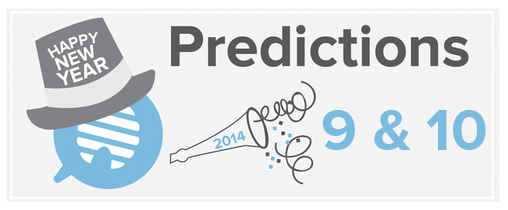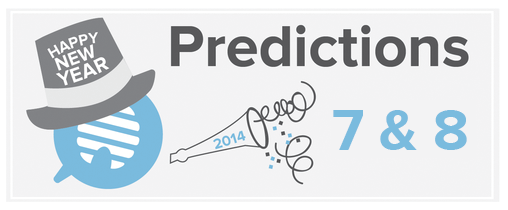2012 was quite a year for content marketing. Increasingly we and other thought leaders in the industry are looking back on 2012 as the year content marketing started moving into the mainstream.
For evidence, you need look no farther than these three articles – from the mainstream press – that discuss content marketing:
So what are the trends we are seeing in Content Marketing as we move into 2013?
1. Good enough is no longer good enough
As content marketing moves into the mainstream, more and more companies are making an investment in content marketing. Standard economic principles apply. An increase in supply of content for prospects to consume means that run of the mill content will no longer get you noticed or drive prospects to take action, where action is often the first step towards a marketing qualified lead and – eventually a sale.
What matters today is the ability to create a lot of high-quality content, content we call “epic” here at Open Marketing, because it tells the brand story, drives action, and cuts through the clutter gets noticed, and ultimately gets shared.
While this might strike fear in the hearts of many agencies and clients, because it sounds expensive, that need not be the case. Yes it takes real creative talent, a knowledge of story telling, branding, and motion graphics and multi-media to create and implement successful campaign marketing campaigns. But distribution of the content itself happens over the internet and largely consists of placement on the client’s site, in social media, and earned media. Placements that are “free” or nearly so. Contrast this with the old style of marketing which focused on having your advertising agency create assets for placement in paid media. In comparison, content marketing is inexpensive and will remain so for the foreseeable future.
2. More visual content
The brain processes pictures faster than it processes words. Visual content is also much more likely to be shared with others – all things being equal.
- On Facebook, videos are shared 12X more than links and text posts combined
- On Facebook, photos are liked 2X more than text updates.
- 42% of all Tumblr posts are photos.
- On YouTube, 100 million users are taking a social action on videos every week.
- Photo and video posts on Pinterest are referring more traffic than Twitter, StumbleUpon, LinkedIn, and Google+.
For a fun infographic on this topic, check on Visual Content Trumps Text in Driving Social Media Engagement courtesy of Hubspot.
3. The beginning of the end of boring content
Clients often come to us perplexed about why they aren’t getting the engagement they want: on their blog or in social media. The answer is simple. Their content is emotionally flat, boring, and written in a style that is dry and impersonal.
Customers want to do business with companies that have a personality and that are not afraid to show it. No one ever bought anything because you bored them to death.
4. More focus on mobile content marketing
It use to be that if you created a dynamite mobile application and placed in the Apple Store, people would download it. This is no longer true. It you create it, downloads will not necessarily follow. In fact, a recent study by xxx showed that the cost per download using paid media is going up while the volume of overall mobile applications is going down. Not surprisingly our practice is starting to break out of the box with customers asking us to put together hard driving plans to drive mobile downloads. Mobile content marketing requires much of the same skills as ‘regular’ content marketing. Additionally, it take a fundamental understanding of what it takes to persuade people on smart phones and tablets and also a good understanding of what doesn’t work given the special needs and demands of small-format and mobile devices.
Mobile content also means giving visitors plenty of shorter sounds bytes interspersed with more robust pieces, so that visitors have something they can consume easily while in line or in waiting rooms. Variety and versatility are critical to attracting and retaining the attention of people when they are on their mobile phones or tablet computers.
5. Continued decline in long-form content
Everytime one of our clients asks us about whitepapers, we cringe. Whitepapers are so … yesterday. Today’s whitepaper are highly visual, engaging, and formatted for a quick read on a desktop computer or mobile device. While they’re called “eBooks” these are really PDFs. Very few of them are formatted as eBooks and distributed through eBook stores. We think this is an opportunity missed.
Summary
So there you are. Five quick trends in content marketing. We would have given you 10 trends. But that would have been long form, tedious to read on mobile, kind of boring, and not at all epic. Now … time to turn this post into something visual!


